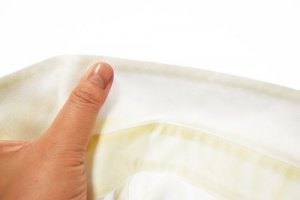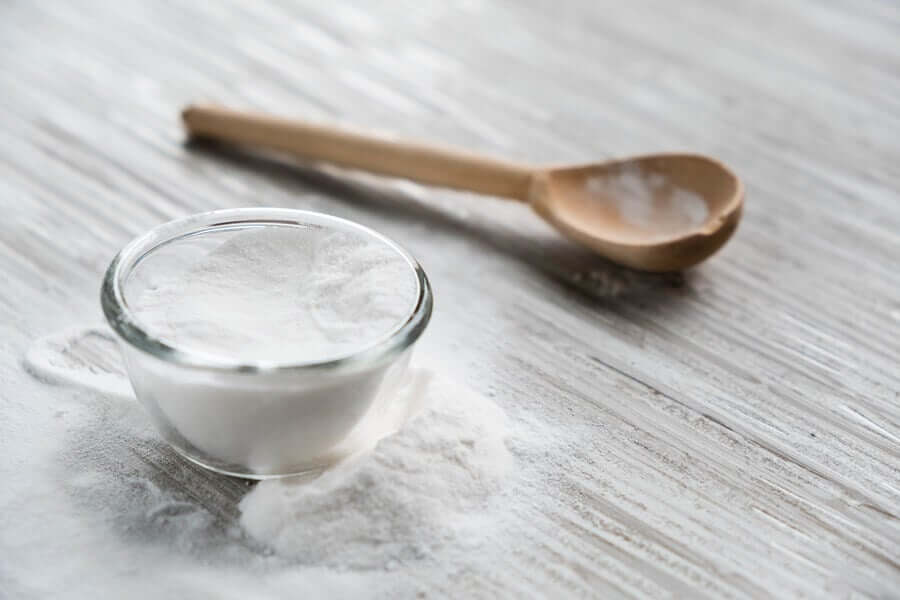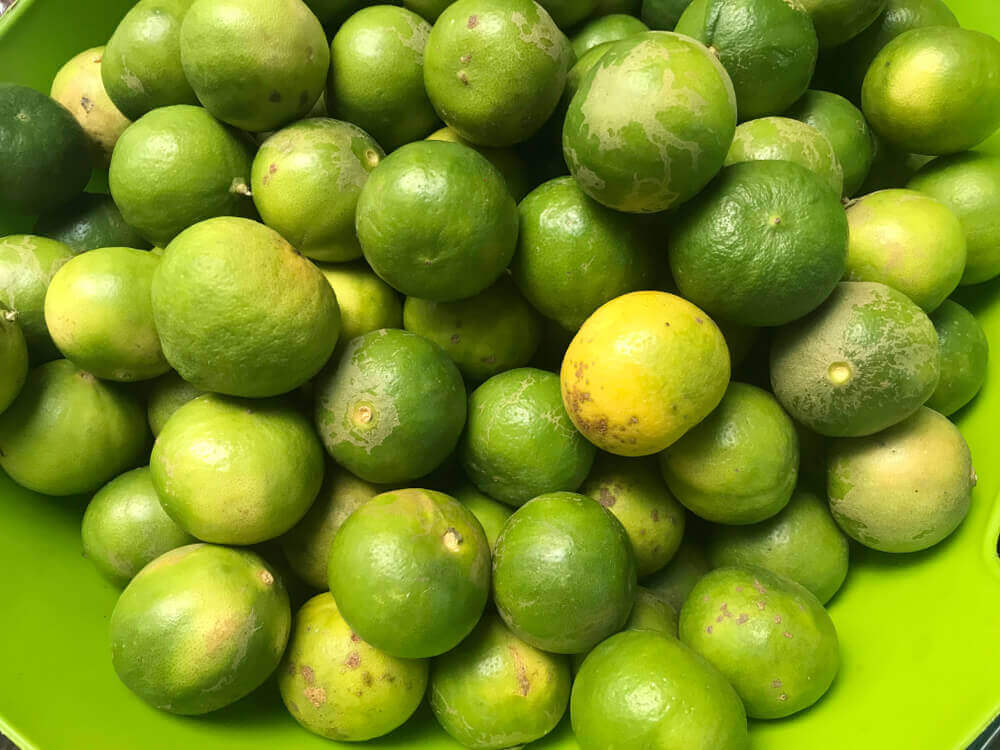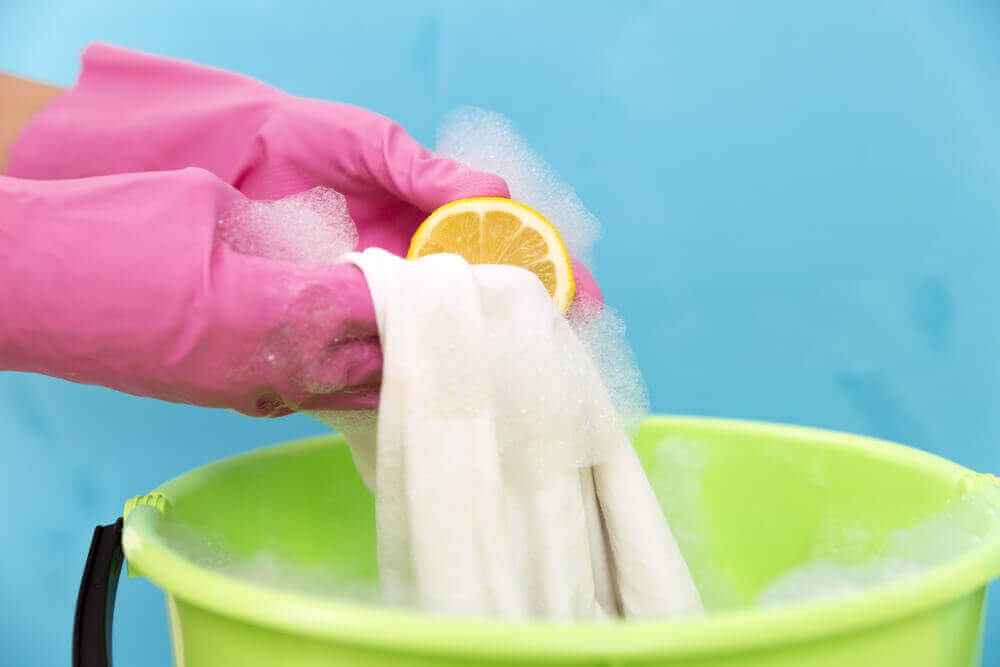Tips to Remove Sweat Stains from White Clothes

Most people have white clothing in their clothes because it goes with everything and can match nearly any style. However, some people prefer not to buy white clothes because they know that, over time, those awful sweat stains will appear and be difficult to remove.
That’s why a lot of people donate or throw away their white clothes because they think it’s not possible to make them look brand new. While water and detergent aren’t enough to remove sweat stains, there are some natural tricks that can help you clean white clothes without damaging them. Dare to try them out!
Natural products to remove sweat stains
Nowadays, many people have stopped using conventional bleach when they want to remove sweat stains or other substances. The reason? Not only do they deteriorate garments, but they can harm your health.
According to information published in the National Center for Biotechnology Information, bleach, whose active compound is sodium hypochlorite, can irritate the skin and respiratory system. Although domestic bleach is relatively benign, experts always advise diluting it in water.
In addition, it’s quite dangerous when combined with other household cleaners, such as those that contain ammonia. In these cases, they result in the release of suffocating chlorine gas. Due to all of this, the ideal thing is to look for alternatives.
Therefore, if you want to remove sweat stains from white clothes, you can try some natural ingredients that seem to be effective. Here are the most popular ones and how to use them.
1. Baking soda, salt, and vinegar
According to popular literature, both baking soda and salt, along with vinegar, are at the top of the list of natural cleaning ingredients. Due to their composition, these natural ingredients penetrate white clothes to remove all the yellow spots formed by sweat.
Now, it’s important to point out that the whitening process consists of several steps since you shouldn’t mix the baking soda and vinegar together. So, in other words, you’ll need to use the vinegar first, and apply the baking soda later. Don’t forget!

Baking soda is one of the most popular natural ingredients when it comes to household cleaning. According to popular beleif, it’s useful in removing stains from white articles of clothing.
Ingredients
- 1 cup of vinegar (250 ml).
- 1 1/2 cups of baking soda (210 g).
- A tablespoon of salt (10 g).
What to do
- Add your clothes to a bowl filled with vinegar and hot water.
- Let them soak for 20 minutes to eliminate most of the unwanted stains.
- Then, mix the baking soda, salt until you have a paste.
- Remove the garments and wring them dry until they’re just damp.
- Spread this paste on the stains and rub them carefully, being sure not to put too much pressure on the clothing fibers.
- Finally, wash your clothes as normal and let them air dry in the sun.
2. White vinegar
There’s no evidence to support the effectiveness of white vinegar against stains on clothing. However, anecdotal data suggests that it can help reduce the yellowish appearance the white clothing often acquires.
Ingredients
- 1/2 cup of white vinegar (125 ml)
- 1 liter of water
What to do
- Dilute half a cup (125 ml) of white vinegar in a liter of water.
- Soak the article of clothing for 40 minutes.
- Rinse with regular movements.
- Repeat this process if necessary.
3. Lemon juice
Lemon juice is one of the most widely used organic ingredients when it comes to green cleaning. In this case, its citric acid seems to be responsible for its whitening qualities. However, evidence to support this is lacking.

Lemon juice seems to help whiten dingy clothing. Hoewver, there’s no evidence to support this effect.
Ingredients
- 1 lemon
- Regular detergent
What to do
- Squeeze some lemon juice and apply it directly to the stain.
- Leave it on for 40 minutes before washing with your regular detergent.
- Remove the juice with water.
4. Salt and rubbing alcohol
The simple combination of salt and rubbing alcohol can help whiten any yellowed areas on white clothes. According to anecdotal data of those who’ve tried this remedy, the application of salt and alcohol can remove unpleasant sweat stains.
What to do
- Dilute two tablespoons of salt (20 g) in half a cup of rubbing alcohol (125 ml).
- Rub this onto the stain using a brush.
- Leave on for 30 minutes before rinsing.
- Use it several times until you remove the entire stain.
5. Lemon slices
Another interesting way to use lemon as a cleaning agent is to cut it into slices by cutting them into slices. In this case, you’ll add a little bit of hydrogen peroxide in order to obtain optimal results.

Rubbon lemon slices on the areas of clothing where stains appear can help improve their appearance.
Ingredients
- One lemon, cut into slices
- 1 teaspoon of hydrogen peroxide (10 ml)
What to do
- Cut a lemon into several slices.
- Place them in a bowl of water.
- Add a teaspoon of hydrogen peroxide (10 ml).
- Soak the article of clothing you want to whiten.
- Let it soak for 45 minutes to an hour before rinsing.
- Wash your garment as normal in your washing machine.
We recommend you read: 5 Tips to Remove Deodorant Stains
6. Baking soda to remove sweat stains
A simple paste made with baking soda can help remove sweat stains or deodorant stains. What’s more, it may also be effective in caring for fabric and its colors.
Ingredients
- 1 tablespoon of baking soda (10 g)
How to use it
- Dampen a tablespoon of baking soda (10 g).
- Rub it on the garment.
- Leave it on for 20 minutes before rinsing.
General considerations to remove sweat stains from white clothes
The above remedies may be useful in improving the appearance of your deodorant and sweat-stained clothing. However, keep in mind that there’s no evidence to support their effectiveness. Therefore, results may vary. That being said, you can make several attempts, since all of these methods are safe to use and don’t damage fabrics.
All cited sources were thoroughly reviewed by our team to ensure their quality, reliability, currency, and validity. The bibliography of this article was considered reliable and of academic or scientific accuracy.
- Benzoni T, Hatcher JD. Bleach Toxicity. [Updated 2019 Sep 3]. In: StatPearls [Internet]. Treasure Island (FL): StatPearls Publishing; 2019 Jan-. Available from: https://www.ncbi.nlm.nih.gov/books/NBK441921/
- Budak, N. H., Aykin, E., Seydim, A. C., Greene, A. K., & Guzel-Seydim, Z. B. (2014). Functional Properties of Vinegar. Journal of Food Science, 79(5). https://doi.org/10.1111/1750-3841.12434
- Griffin, A. Cantrell, R. (July, 2014.). Homemade Household Cleaners. Institute of Food and Agricultural Sciences, University of Florida. Available in http://edis.ifas.ufl.edu/pdffiles/FY/FY144900.pdf
This text is provided for informational purposes only and does not replace consultation with a professional. If in doubt, consult your specialist.








